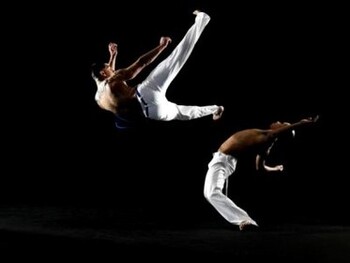Capoeira

Capoeira is not simply a martial art but is also a dance. It was practised in Brazil originally by those Africans who were enslaved and because they were forbidden to fight at all by those in power, why not visit, Needlepoint these early Capoeirists hid the sheer power also look at, RC Boats of this style through dance. Slaveholders did not feel that the Capoeira was a threat though as the ‘dance' was accompanied by the berimbau, a unique percussion instrument and the atabaques (drums) and appeared to be non-aggressive. Even in today's modern society, music is still very central to the art and it generally occurs within a circle with singers and musicians accompanying them.
The movement is considered rhythmic with the two players (they are not called martial artists) attacking and counter-attacking without ever striking the other.
The first Capoeira academy was opened in 1932 after efforts by the government were increased to promote it as a Brazilian sport. The style was changed significantly at that time and the more' ritualistic' aspects of Capoeira were dropped for a more aggressive fighting style. The new style was called ‘Capoeira Regional'.
Nine years later in 1941, Mestre Pastinha opened his own school and this school then began to teach the more traditional style renamed as ‘Capoeira Angola'. Nowadays, students all over the world can either study ‘Regional' or ‘Angola' styles or sometimes a combination of both.
Because Capoeira combines martial arts with the rhythmic fluid motion of dance, it makes it an excellent choice for those who like variety and are drawn to dance movements coupled with martial arts technique.
Featured Articles
 Village Blacksmith Village Blacksmith
Village blacksmith have always held an important place in society especially in olden times. Despite |
 Cartoon Doll Making Cartoon Doll Making
Cartoon doll making is one of the easiest ways to make a doll, with almost no basic materials requir |
 Plastic Model Display Case Plastic Model Display Case
If you choose a plastic model display case to put your models in the make sure the plastic model dis |
 Cigarette Card Collectibles - Cartophily Cigarette Card Collectibles - Cartophily
Cigarette card collectibles form an interesting hobby, known as cartophily. Unlike other collectible |
 Collectible Coin Banks Collectible Coin Banks
Collectible coin banks are fun, colourful and have great variety, making them ideal items for collec |
Popular search terms people have used to find this page are hobby (52.94%), resources (23.53%), https://www.google.com (8.82%), https://www.google.com/ (8.82%), capoeira worth it (2.94%), https://search.yahoo.com/ (2.94%)